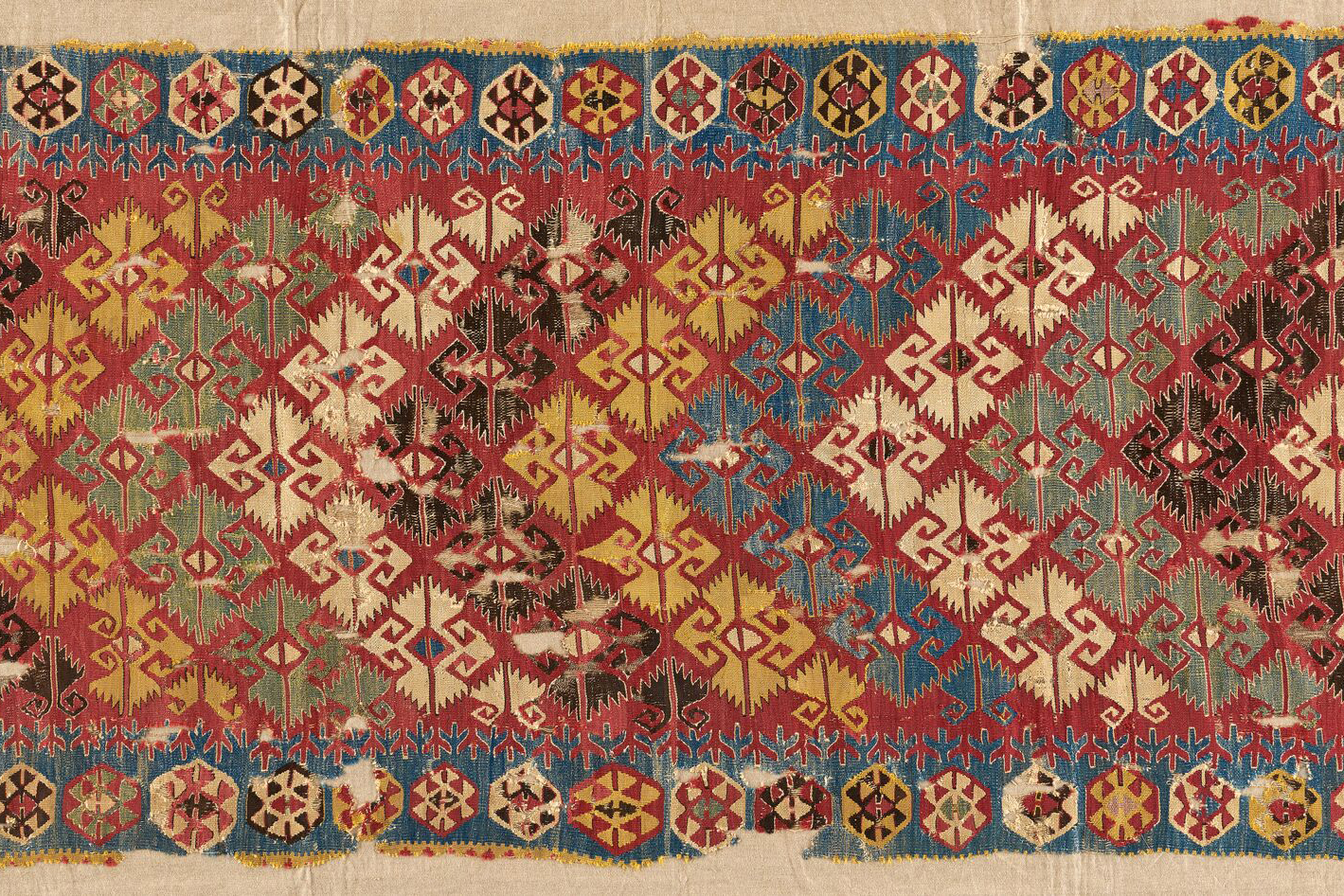By Ruth Steinhardt
For centuries, nomadic shepherding tribes in Anatolia in modern-day Turkey traveled seasonally between the cool mountains and the warm Mediterranean shore. That lifestyle is now vanished, but at least one material record remains: kilims, the striking geometric textiles woven by nomadic Anatolian women to protect caravans and decorate tents.
“Kilims hold significance far beyond their visual impact,” said Sumru Belger Krody, senior curator at the George Washington University Museum and The Textile Museum, where “A Nomad’s Art: Kilims of Anatolia” opened Saturday. “Most importantly, they are the only lasting material evidence of their makers’ nomadic lifestyle. These pieces are powerful demonstrations of nomadic women’s ability to create an artistic tradition that still resonates with contemporary audiences.”
The peripatetic lifestyles of the weavers meant kilims had to be woven on narrow portable looms, resulting in a characteristic long, rectangular shape. For larger textiles, a kilim could be duplicated in reverse and the two stitched together to create a double width.
The particular tapestry weave technique used resulted in sharp delineations of color, arranged in striking, intricate patterns of hooks and triangles. Colors were bold and highly contrasted. Some pieces in the exhibit are identical in pattern, but appear completely different due to the application of color.
Kilims were used to cover the piles of belongings carried by camels during the moves between summer and winter pastures. They also could serve as partitions within tents or simply as decorative elements.
“Everything they had had to be utilitarian, but they beautified it, too,” Dr. Krody said.
The pieces in “A Nomad’s Art” come from the museum’s Murad Megalli collection of 96 Anatolian kilims, acquired by bequest. Mr. Megalli, B.S. ’80, was a George Washington University alumnus, textile collector and business executive.
He first encountered kilims through his close friendship with Josephine Powell, a celebrated ethnographer and photographer of Anatolian life. “A Nomad’s Art” includes 36 kilims from his collection, as well as large reproductions of Ms. Powell’s photographs capturing the vestiges of nomadic life in 20th-century Turkey.
For Dr. Krody, kilims serve as one record of a people who left almost none. The social traditions of Anatolian nomads were passed down orally, not written down. They appear in the historical record only through the eyes of others, as in the records of Anatolia’s Ottoman rulers.
“These were patriarchal societies, but women’s work laid the foundation of daily life,” Dr. Krody said. “And that work is what is left behind.”
Kilims are also compelling for their individuality. Each was woven not by workshop, as in most European tapestries, but by an individual woman who controlled every step of the creative process. She spun her own yarn from her own family’s flocks and drew on designs passed down by her female relatives. A woman’s workmanship on her kilims could serve as a display of resources, skill and even marriageability.
Dr. Krody said she does sometimes feel frustrated not to know more about the individual women who created the pieces and the ways their art reflected their personal circumstances.
“You look at these and you think, ‘Someone touched this,’” she said. “But you can’t know who she was, and you never will.”


